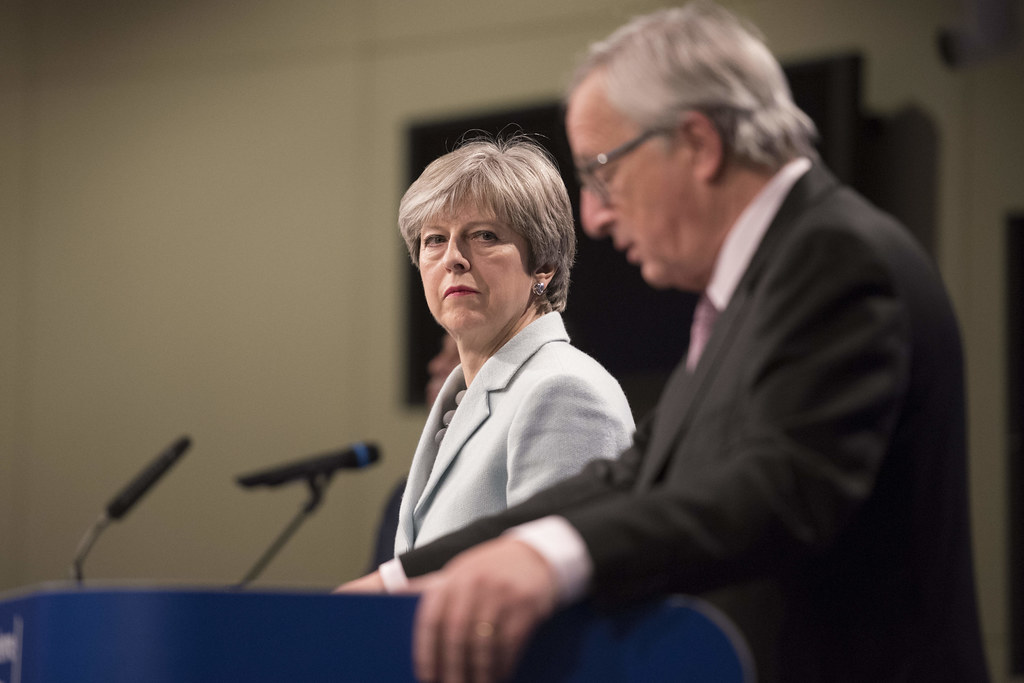Mission accomplished. Or so it seemed. The recent European Council of 15 December 2017 finally approved the recommendation of the Commission to proceed to the second phase of the negotiations between the UK and the EU. The well-known goal of ‘sufficient progress’ has finally confronted the three key issues at stake: the rights of citizens (EU citizens in the UK and British citizens in the EU), the financial obligations of the British (something which is erroneously known as the Brexit bill) and the solution to the vexing issue of the border between Ireland and Northern Ireland (a concern around which positions have hardened in recent times). The good news, however, is that such an agreement has been reached. The bad news is that what remains to be done is as difficult as that which has been achieved (and more), and this does not bode well. To have reached an agreement on the issues mentioned only implies that now progress must be made on other questions. To conclude the withdrawal agreement (or ‘divorce accord’) it is necessary to go much farther, entering into much more detail in these three areas while at the same time taking up other concerns that will be just as delicate.
“The British have had to accept, slowly but inevitably, all of the stipulations of their EU counterparts”
The first phase of the negotiations has been anything but easy, but if it has proved anything it is that the real significance of Brexit is the erosion of British power. The country is not at all accustomed to having to negotiate from a position of such little strength (which came, in part, precisely from its EU membership). What we have witnessed to date is that the British have had to accept, slowly but inevitably, all of the stipulations of their EU counterparts. This situation has been shaped as well, without a doubt, by the many internal problems of the UK since the referendum (from the first government crisis which prompted the substitution of David Cameron for Theresa May, to the new elections in which the Tories lost their absolute majority, and finally to the formation of a cabinet which is completely divided as to how to manage Brexit). At the same time, the previously unforeseeable unity demonstrated by the other 27 countries of the EU has also proved fundamental in that their difficult internal negotiations have crystallised into political positions with very little scope for flexibility, much to the chagrin of the British. Indeed, the maintenance of such unity at the heart of the EU will continue to be the key to the success of the demands postulated by the EU-27.
The number of claims to which the UK has had to renounce since it held its referendum on 23 June 2016 has been, simply put, impressive. Perhaps the most noteworthy has been the economic question, since the famous promises made during the election campaign –that the British health system would gain £350 million a week –have vanished into thin air–. Then there was the systematic denial that the UK would have to pay anything to the EU upon exit. Finally, the British have had to agree on a methodology for calculating the quantity that the UK will have to pay to the EU –now estimated at between €45 billion and €60 billion– to cover its share of the pensions of EU functionaries and its remaining obligations to the European Investment Bank, along with the UK’s other financial commitments related to the EU budget.
But there have been a number of other turnabouts and instances of yielding as well. To start with, Theresa May waited for several months before activating Article 50 of the EU Treaty and kicking off the countdown for Britain’s exit. Her motive was simply to gain time. The EU remained firm in its decision not to negotiate anything with the UK until it had activated its departure, despite the fact that May would have preferred to negotiate the citizen question immediately. Finally, the Prime Minister had to give way. The same thing happened with respect to the idea of the UK remaining within the Single Market. The EU made it clear from the informal meeting on 29 June, just after the UK referendum, that the four fundamental freedoms of the EU were indivisible and that, therefore, if the UK wished to control its borders, it would have to renounce its participation in the Single Market, one of the central aspects of the EU project. And, indeed, May had to yield ground yet again, announcing the UK’s exit from the Single Market (and also from the Customs Union) in her celebrated speech at Lancaster House in January.
“The window of opportunity for negotiating the divorce agreement will shut in the fall of 2018”
But this has not been all. The UK tried to negotiate the divorce agreement at the same time that it tried to arrange a future trade deal (along with other accords related to the fight against terrorism). Once more, the country had to yield in the face of Brussels’ position, which imposed a particular ‘sequencing’ to the negotiations. That is to say: first the exit would be negotiated, in two phases, and only when ‘sufficient progress’ had been achieved on issues considered key would the negotiations proceed to the second phase of the divorce proceedings, in which a future framework for UK-EU relations would begin to be discussed. Aside from the previously-mentioned economic field, the other two fundamental questions were related to citizens’ concerns and the Irish border. The citizen issue is particularly sensitive for a number of Member states (among them Spain) and for the European Parliament. The solution reached, once again, has been much closer to the position defended by the EU than to that proposed by the UK last summer. Finally, the Irish border issue has been ironed out (at least for now) by some grammatical gymnastics that attempt to square the circle without a hard border: the UK leaves the Single Market and the Customs Union, there is no border between Northern Ireland and the rest of the UK, and there is no border between Ireland (which IS part of the Single Market and Customs Union) and Northern Ireland.
Article 50 of the EU Treaty foresees the negotiations lasting two years, unless they are extended by unanimous decision of the Member states. Taking into account the need for approval by the European Parliament (and by the British parliament, particularly after yet another internal defeat for May), this implies that the window of opportunity for negotiating the divorce agreement will shut in the fall of 2018. The agreement will need to be ready by then in a legally-binding treaty format, including as well a transition accord (requested by the Prime Minister to avoid a so-called cliff edge). The EU wants this transition agreement to be of short duration, concluding no later than 2020 so that it coincides with the current Multiyear Financial Framework, and not with the next one, so as to avoid more significant complications. But to conclude both the divorce agreement and the transition accord in such little time will frankly be difficult, among other things because there are certain questions which could become confrontational, like Gibraltar, to start with. And then there will be the future agreement, about which discussions will only begin in the spring. Given that the CETA contains more than 1,500 pages and took seven years to negotiate, it is difficult to be optimistic about the future when it has taken nine months to reach ‘sufficient progress’ on an agreement of only 15 pages. The only hope is that the UK learns from its about-faces and abandons its unrealistic positions that only cause frustration and delays in what are already very complicated negotiations.



